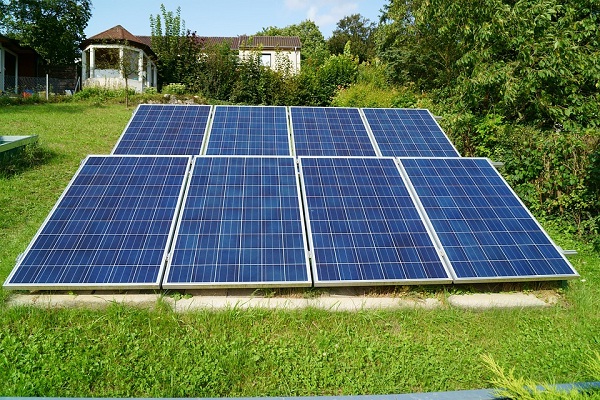Analysis of the key content of PV in the press conference of the National Energy Bureau
On July 30, the National Energy Administration held a press conference in Beijing, which released the energy situation in the first half of this year, the operation of renewable energy connected to the grid, the 12398 energy supervision hotline complaints and reports in the second quarter, and also targeted the "Electric Safety Production Action Plan ( 2018-2020) was interpreted and answered questions from reporters. This article will analyze the key content of the press conference of the National Energy Administration today.
First, the momentum of clean energy development is fierce
Li Fulong, director of the Development Planning Department of the National Energy Administration, said that the power development situation in the first half of the year indicated that China's power generation structure was further optimized, and the clean energy consumption was effective. In the first half of the year, the total installed capacity of nuclear power, wind power and solar power accounted for 66.1% of the total installed capacity, up 5.4 percentage points over the same period of last year; the total output of nuclear power, wind power and solar power increased by 19.0% year-on-year, higher than that of thermal power generation. The speed is 11.0 percentage points. At the same time, the national abandonment rate and the rate of light abandonment decreased by 5.0 and 3.2 percentage points respectively over the same period of last year.

Editor's comment: The slogan of clean energy replacing traditional energy is shouting every year, but the actual development is not optimistic. At present, the traditional energy source based on thermal power is still the main body of energy consumption in China, and this situation is still difficult to break in the short term. Fortunately, the development of clean energy has begun to accelerate. The total installed capacity of nuclear power, wind power and solar power accounts for 66.1% of the total installed capacity. The growth of nuclear power, wind power and solar power is 11.0% higher than that of thermal power. The speed and potential of energy development, I believe that in the near future, clean energy can become the mainstay of energy consumption.
Second, the first half of the new PV installed capacity 24.3GW distributed 12.24GW
Liang Zhipeng, deputy director of the New Energy and Renewable Energy Department, said that in the first half of this year, the renewable energy power construction and grid-connected operation showed that in the first half of this year, the scale of renewable energy power generation continued to expand, and the wind power and photovoltaic power generation situation continued to improve. The “double drop” was achieved by abandoning the power and abandoning the rate.
As of the end of June 2018, China's renewable energy power generation capacity reached 680 million kilowatts, an increase of 13%; among them, hydropower installed capacity of 340 million kilowatts (full-scale statistics, including pumped storage of 29.19 million kilowatts), wind power installed capacity of more than 170 million kilowatts, Photovoltaic power generation installed more than 150 million kilowatts, biomass power generation installed 16.34 million kilowatts.
In the first half of the year, the national abandoned photoelectric output was 3 billion kWh, a year-on-year decrease of 700 million kWh, and the light rejection rate was 3.6%, down 3.2 percentage points year-on-year. In the first half of the year, 22 provinces (autonomous regions and municipalities) did not abandon light and electricity, and another 6 provinces (districts) had a light rejection rate of less than 5%. Only those with a light rejection rate of more than 5% were only Gansu, Xinjiang, and Shaanxi. Area).
In the first half of the year, photovoltaic power generation installed 24.3 million kilowatts, of which, photovoltaic power station was 12.6 million kilowatts, a year-on-year decrease of 30%; distributed photovoltaic power generation added 12.24 million kilowatts, an increase of 72%. By the end of June, the country's photovoltaic power generation capacity reached 154.51 million kilowatts, including photovoltaic power plants of 112.6 million kilowatts and distributed photovoltaic power generation of 41.9 million kilowatts.
From the layout of new PV installations, the newly installed capacity in East China was 6.218 million kilowatts, accounting for 25.6% of the country; the newly installed capacity in Central China was 3.878 million kilowatts, accounting for 15.9% of the country; and the newly installed capacity in the northwest was 4.12 million kilowatts. Distributed photovoltaic power generation continued to maintain rapid growth. In the first half of 2018, the installed capacity of Shandong, Zhejiang, Henan and Jiangsu provinces exceeded 1 million kilowatts, and the newly installed distributed photovoltaic installations in the four provinces accounted for 52.6% of the country.

Editor's comment: Despite the wave of twists and turns, the development of China's photovoltaic industry in the first half of this year is still gratifying. The installed capacity of 24GW is almost the same as last year. Surprisingly, the outbreak of distributed photovoltaics, 72% of the growth perfectly shows its huge development potential. From the perspective of installed capacity, the central and eastern regions have become the key development areas of the domestic photovoltaic industry, while the distributed photovoltaics are still more prominent in the development of Shandong, Zhejiang, Henan, Jiangsu and other provinces. According to the development of distributed photovoltaics, due to the release of local subsidy policies, the development of emerging markets such as Shanghai and Guangdong may be expected in the future.
Also worth mentioning is the control of the light rejection rate. Over the years, efforts have finally made a huge breakthrough, and the 3.6% drop rate is a new low in recent years. This is also the first time that China has abandoned the light rejection rate within 5% since the outbreak of the problem of power cuts. This is a landmark gain in the industry. At present, only nine provinces in the country have experienced the phenomenon of discarding light and electricity, and only the three provinces (regions) of Gansu, Xinjiang and Shaanxi have surpassed. However, it is worth noting that, according to the above data, the average light rejection rate of the three provinces of Gansu, Xinjiang and Shaanxi may be around 25%, which is still very serious. It can be seen that the road to the elimination of light and electricity is still a long way to go.
In addition, the mitigation of the problem of power cut-off is based on the mandatory control of the scale indicator of the power station. At present, in several areas where light is more serious, there have been no new scale indicators for several years, that is, no new photovoltaic power plants are connected to the grid. Under such circumstances, the development of local photovoltaic power generation is almost stagnant. Although the power cut-off is controlled, the price paid is not small. What we expect to see is that while a local photovoltaic power generation is developing rapidly, there will be no problem of power-off and power-off; instead of avoiding the problem of power-saving. To completely inhibit the development of photovoltaic power generation in one place.
